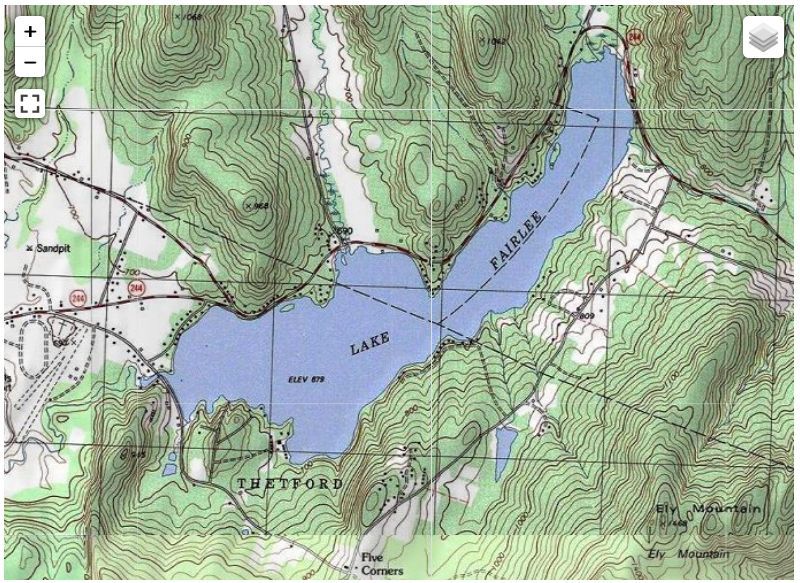Wakeboarding boats are making waves on Lake Fairlee
Strong waves from passing wakeboats pose a serious threat.

A resident on Lake Fairlee was treating an elderly couple to a pontoon boat ride recently when they noticed a motorboat with a surfboarder riding in its wake. It passed down the east side of the lake and turned at the north end near the shallows that support the only loons’ nest, to make a pass along the west side. It was then that a strong wave crashed into the pontoon boat. It broke over the front of the boat that sits about 2 ft above the water, and washed along the entire length of the deck. The 93-year old man and his 90-year old wife had their lower extremities drenched. As the motor boat came around again it hit its own wake, which was still powerful and with poetic justice, knocked the wakesurfer off his board.
Another resident was going for a late-day swim when a motorboat with a powerful wake passed at least 200 ft off shore. The swimmer noted the swells from this boat were the biggest he had ever seen in over two decades of residence on the lake. They also noticed freshly eroded soil at the base of a pine tree at the water’s edge. While shore erosion has been steadily increasing as more and more recreational boats and “party boats” use the lake, the addition of even bigger wakes threatens to accelerate this problem.
This is Lake Fairlee’s first taste of the fast-growing sport of wakeboarding or wakesurfing. Wakeboard boats (aka wakeboats) are designed to create the biggest wake possible so that surfers can ride it without a tow rope, in contrast to a towed waterskier. Unlike power boats that are relatively light and rise up in the water when at speed to partially skim the surface (planing), everything about wakeboats is designed to keep them down, to displace as much water as possible. The engines are mounted backwards to make the rear of the boat heavy. Further weight is added with ballast in the form of tanks or bags filed with water, up to or more than 4,000 pounds. The hull design incorporates wedges and curved plates that are placed deep in the water and shaped to achieve the greatest amount of water displacement plus a “gate” system to shift weight from one side to the other. They also have extendable hydrofoil devices that pull the stern even lower in the water to create a larger wave.
Some wakeboats are equipped to play music, too. One wakeboard school on Lake Champlain advertises a “400 watt, water-rippling audio system.”

Wakeboats are a major growth sector of the recreational motor boat market. Sales of wakeboats increased by 22% to 144,700 units in 2020, second only to jet-ski sales that increased to 82,500 units, a rise of 8%. Due to their family and fun appeal, the wakeboat market is predicted to grow at a healthy rate over the next five years. According to a boating industry report (boatingindustry.com), wakesurfing appeals to boaters of all ages, particularly younger buyers, and it attracts new boaters to water sports.
However, in many places where wakesurfing has caught on, there has been a fierce backlash against the sport. Powerful waves crashing into lakeshores erode shoreline soils and deposit excessive nutrients like phosphate into the water, contributing to algal blooms. A study by the University of Quebec in Montreal found that wake energy has a considerable impact on shorelines when wakeboats pass within 300 ft, but is insignificant when the boats are 1000 ft away.
The waves damage emergent, floating, and submerged plants, including cattails, sedges, arrowheads, and pondweeds. This shoreline vegetation provides critical cover and habitat for juvenile fish, amphibians, insects, snails etc., important food sources for larger fish and wildlife like waterfowl, herons, mink, etc. (On Oregon’s Willamette River, federal officials cite that wakeboats damage the river’s salmon and trout population.) The waves are strong enough that they also create significant disturbance of the lake bottom. This disrupts fish breeding areas. It also stirs up and releases phosphate trapped in sediment. Research from Laval University in Quebec City showed that when wakeboats operate in water less than 16 ft deep, their impacts damage plants, stir up lakebeds, and promote growth of algae.
The ballast tanks in a wakeboat are filled in one lake, but may be transported to another lake where they could eventually be emptied. This practice has potential to spread aquatic invasive species from affected lakes to pristine waters.
Loons were on the endangered list in Vermont till 2005. Currently there are about 100 breeding loon pairs in the state. They typically nest on the ground at the edge of a lake. However, their nests are vulnerable to flooding and to artificial raising of the water level. On Lake Fairlee, the Vermont Center for Ecostudies, residents, and VCE volunteers established a loon nesting platform in 2017 near wetlands at the north end of the lake. It is watched over by residents and the VT Loon Conservation Project. The platform has successfully produced loon chicks for the past few years. Strong waves from passing wakeboats pose a serious threat, directly to the nesting platform and also because of general disturbance of what had been a quiet and secure-seeming area.

Other forms of lake recreation may be displaced by wakeboats. On lakes in other parts of the US, such as Minnesota where wakesurfing has become common, there have been numerous instances of people knocked off docks and out of small boats by powerful wakes. Beaches have even been perceived as unsafe for small children. Moored boats are lifted and rocked violently by strong wakes. This can result in the boats hitting against a dock or drifting away because anchors were pulled out of the ground or the lake bed.
The problem stems from the amount of energy contained in a wakeboard wave. A publication from the University of Sydney, Australia, compared a waterski boat with a wakeboat at their respective operating speeds of 30 knots for a skiboat and 19 knots for a wakeboat. They found that even though the maximum wave height at a distance of 1000 ft was 0.8 ft for the wakeboat, and 0.4 ft for the skiboat, the waves from a wakeboat carried five times the energy.
In 2019 Vermont had introduced a bill, S.69, to limit the use of wakeboats on lakes other than Champlain and Memphramagog. The boating industry, represented by the National Marine Manufacturers Association, vigorously opposes such legislation. To quote from their website: “NMMA is firmly opposed to this (Vermont S.69) measure and is actively working to prevent it from becoming law.”
In fact S. 69 became a victim of the “biennium” legislative process whereby bills the have not become law by the end of the biennium are terminated. Because S. 69 had not been adopted in 2020, it died.
Residents on Lake Fairlee, including plants and animals, will have to wait and see if there will be an attempt to re-introduce legislation.
Editor's Note: an earlier draft of this article incorrectly indicated that there was currently draft legislation to regulate wakeboats under consideration by the Vermont legislature. There is not.
